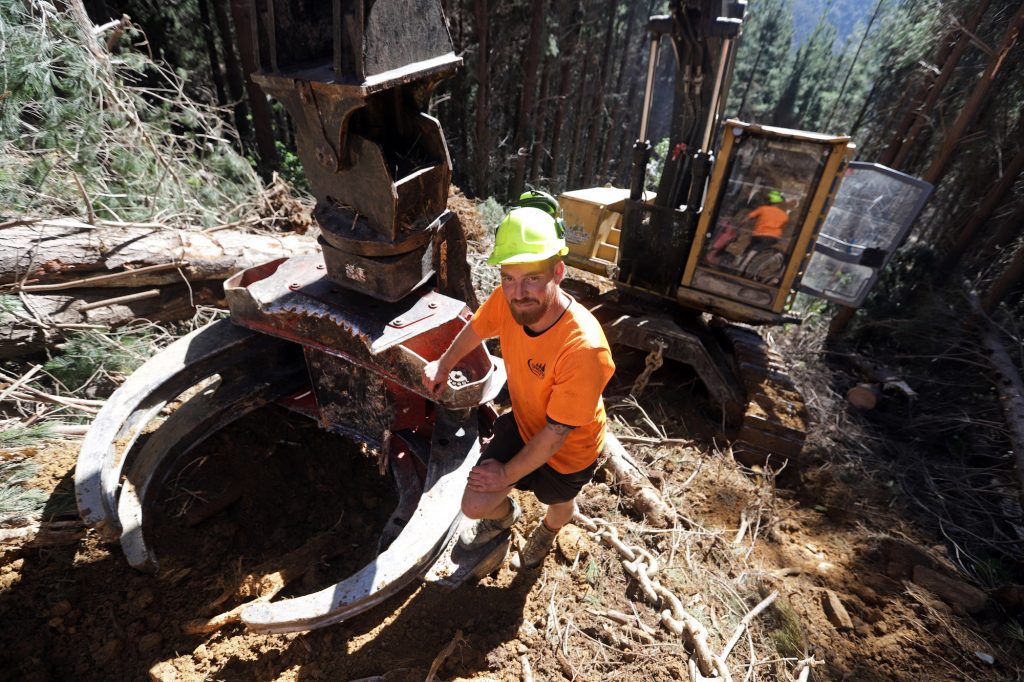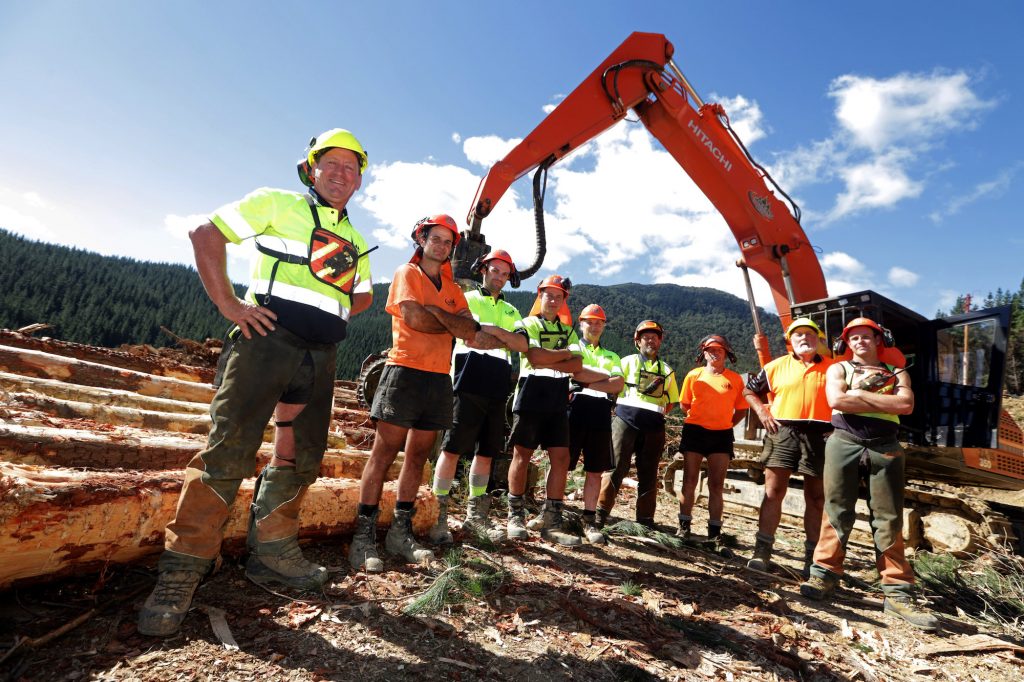By John Cohen Du-Four
Photo Tim Cuff

As a company at the very forefront of the New Zealand forestry industry’s drive towards safer work practices, Nelson Management Ltd (NML), who manage Nelson Forests, is continuously seeking new ways to ensure worker safety.
Two recent innovations embraced by the company are at either end of the size spectrum: massive cable-assist harvesters, and small, lightweight drones.
James Appleton, a harvest planner at NML, explains the company’s attitude to forestry safety: “Our region has always been ahead of the game, and NML are known to push things along when it comes to safety. We’ve been early adopters of new technologies, and have contractors willing to run with our safety-focused agenda.
“A big part of risk mitigation,” says James, “has been the move to mechanisation. Keeping crew off the ground, within reinforced steel cabs with safety glass, strapped in a four-point harness – that’s a whole lot safer environment. It has also dramatically increased production from the forests.”
Typical of those benefiting from this win-win situation is contractor Ken Green, whose crew is one of twenty-one harvesting teams working full time in NML’s estate.
“Safety is critical to the team,” says Ken, “with each person in the crew playing their part. Everyone has a role, everything has its place – all have real capabilities, but also limits. Excellence in planning is vital.
“Take monitoring, for instance,” he continues. “It’s critical we keep developing our auditing processes. For example, we jointly sign off each and every mechanised felling plan, between regional manager, harvest planner and contractor. Three sets of eyes across the job means we clearly identify and control risk factors.”
Cable-assisted harvesting is forestry mechanisation’s latest technological breakthrough, allowing greatly improved steep slope harvesting. Mechanical felling machines have been limited, until recently, to slopes no greater than twenty degrees. But once attached to the mighty torque of a purpose-built, cable-assist machine that’s been driven and placed strategically uphill from the mechanised harvesting machine, harvesting can occur on slopes as steep as forty degrees.
“This helps keep manual crew off the ground in potentially dangerous challenging terrain,” says Ken. “Ten years ago, I would have had at least four or five workers on the ground with chainsaws working flat tack. Now, with just one mechanised felling machine, one cable-assist machine, and one mechanical log processor, there’s often only one chainsaw on the go.”
Ken’s locally-assembled cable-assist machine features sophisticated on-board computers enabling it and the attached felling machine to talk to each other. For example, they electronically share information about the weight being pulled, so adjustments can be made instantaneously.
“Everything is monitored,” Ken says. “Should any slipping of the felling machine occur, it is detected and auto-braking immediately takes over to ensure safety. On-board TVs allow visual monitoring of the cable on its drum. There are alarms for everything.”
Ken explains that in steep terrain anything can unintentionally come downhill, either onto the skid site, or into environmentally safeguarded areas, so identifying and classifying high risk spots into ‘Red Zones’ is another way of mitigating risk.
“We never appreciated just how advantageous this particular safety aspect of cable-assist mechanisation would be – its ability to greatly speed up and reduce operational time in Red Zones,” says Ken.
“There’s always risk,” he stresses. “It doesn’t just go away because someone’s in a cab. So every morning we share sets of risk assessment plans on site at tailgate meetings.”
Considerations include: a skid site plan; a breaking out plan covering cable attachment to felled timber for extraction to the skid site; a felling plan for any manual cutting; and a slash plan for woody debris. Cable haulers, who operate cable pulling to extract timber from the forest, also have their own plan.
“There’s continuous monitoring of operations,” adds Dan Jenkins, Ken’s crew foreman, “because many of these plans unfold simultaneously. This is why Ken conducts monthly behaviour audits, where every aspect is reviewed to assess how our planning actually unfolded, identifying anywhere there’s room for improvement.”
At the other end of the mechanisation size scale, yet increasingly useful, is drone technology. James Appleton explains: “Drones are allowing us to quickly and with minimum impact evaluate the condition of a terrain, the site we’re heading into next, the quality of roading in and out. This proved especially valuable after last year’s drenching cyclone event.”
He continues: “Another example is whenever we break out trees down a hill – we always need to instigate a minimum safety retreat area of twenty metres. Overhead drones allow us to assess how best to achieve this, and monitor that it is completed according to plan.”
“The risk reduction due to all the new mechanisation is fantastic,” says Ken. “The fact is,” he adds with a smile, “the worst injuries to affect my crew in the past four years have been a pinched finger and a cut finger.”
Yet for all the increasing innovation and mechanisation, Ken still emphasises that something as simple as the wide age range within his crew brings its own safety advantages. “We have two in their sixties, one in his fifties, two in their forties, and four in their twenties,” he says. “That’s a great mixture of knowledge and experience, youth and vigour. Everyone’s got something to offer, everyone’s got each other’s back.”

